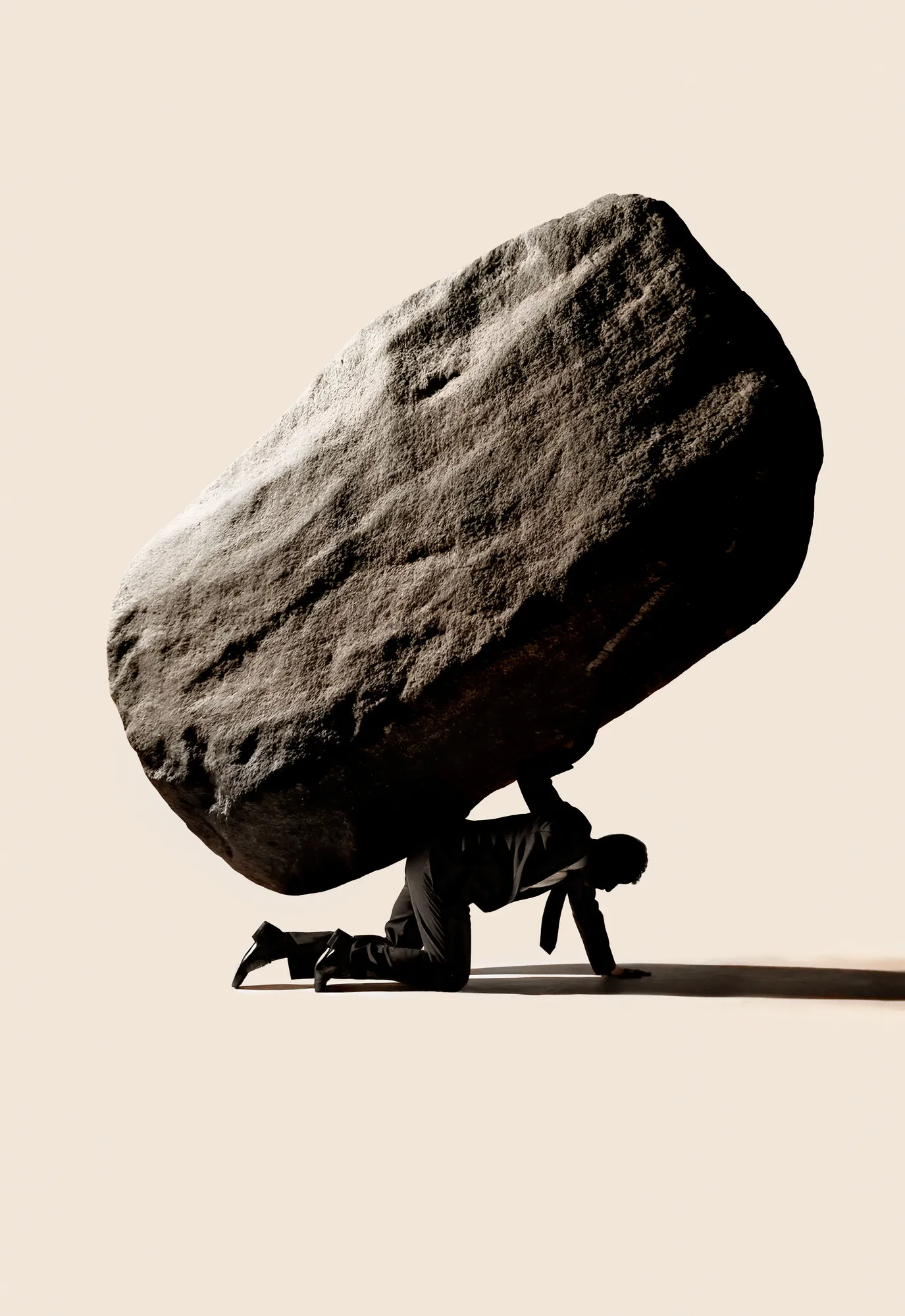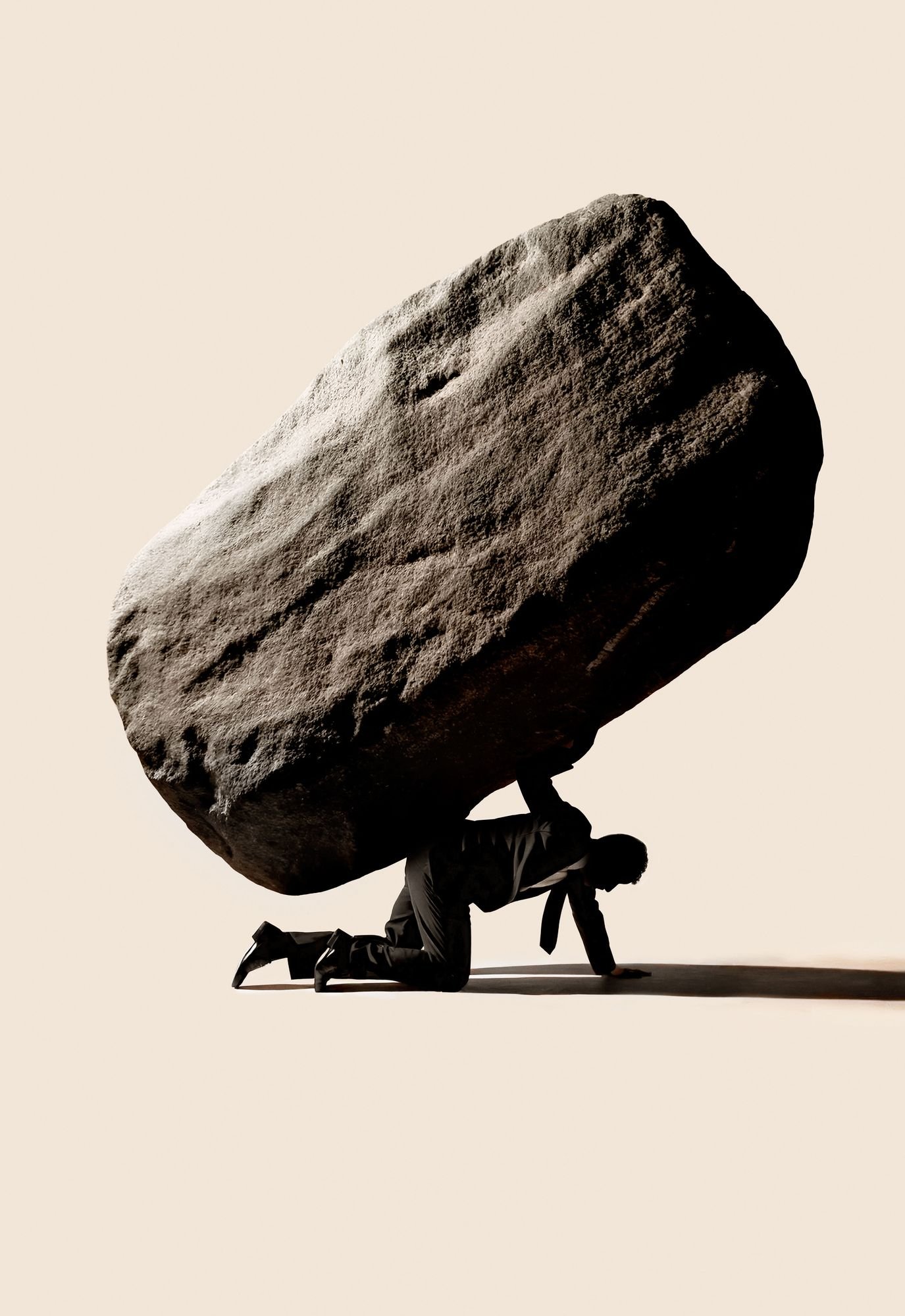Maurizio Cattelan’s Bones exhibition at Gagosian challenges the boundaries between creation and destruction, using gold and marble to transform violence into transcendent beauty.
By Arts Editorial Staff
Gold, pierced by bullets. Marble, sprouting horns. A couch, bearing the weight of mythology. In 'Bones,' opening April 8th at Gagosian Davies Street, Maurizio Cattelan orchestrates these unlikely elements into a meditation on violence and transcendence, where the act of destruction become a genesis rather than an apocalypse.

The Alchemy of Destruction
At the heart of Bones lies a seemingly paradoxical proposition: destruction as a generative act. Cattelan presents a series of stainless-steel panels lavishly plated in 24-karat gold, each altered by gunfire. These violent interruptions transform the pristine surfaces into complex territories where violence becomes a creative force. Each large-caliber bullet hole marks the panel not as damaged, but reborn.
From a distance, the gold gleams with uninterrupted luxury; closer inspection reveals the violent perforations—each one a deliberate wound in the material’s perfection. These are not random acts of destruction but calculated interventions that force viewers to reconsider their relationship with both beauty and violence.
Material Politics
Cattelan’s choice of materials is never incidental. Gold, historically a symbol of wealth, power, and permanence, also possesses the ability to be melted down and reformed—a paradoxical material that is both eternal and ephemeral. By subjecting gold-plated surfaces to gunfire, Cattelan creates a potent commentary on the relationship between wealth and violence in contemporary society.
The exhibition positions itself within a broader artistic tradition of creative destruction, from the Dadaists to Gustav Metzger's auto-destructive art. However, Cattelan’s distinctive contribution lies in his luxurious approach to destruction—these are not mere damaged objects, but transformed artifacts that question how value is assigned and preserved in our culture.
"Notre Dame": The Primordial Meets the Domestic
Alongside the perforated panels stands Notre Dame (2025), a singularly arresting sculpture that exemplifies Cattelan's gift for unsettling juxtaposition. A substantial boulder of pristine Carrara marble, crowned with horns, rests improbably atop an ordinary couch—creating an immediate tension between the monumental and the mundane.
The horned boulder evokes primal, mythological associations—a deity or sacrificial form transported from ancient ritual into the banality of domestic space. The couch, a symbol of comfort and the everyday, becomes an unlikely pedestal that both elevates and undermines the primordial presence it supports.
This collision of elements—the ancient and the contemporary, the sacred and the profane—creates a cognitive dissonance that has become Cattelan's hallmark. The sculpture exists in a state of productive tension, challenging viewers to reconcile seemingly incompatible elements within a single frame.
The Artist of Provocation
Throughout his career, Cattelan has demonstrated a remarkable ability to elicit visceral responses. His works have been stolen, vandalized, and, in one infamous case, consumed—when performance artist David Datuna ate Cattelan’s banana work Comedian at Art Basel Miami. Rather than deterring him, these extreme reactions have become part of Cattelan’s broader artistic project—a testament to art’s power to disrupt and destabilize.
Bones continues this tradition of productive disruption. The exhibition's title itself suggests both structure and mortality—permanence and decay—the skeleton that remains when all else has vanished. In these new works, Cattelan explores the enduring tensions between opposing forces: creation and destruction, nature and artifice, resilience and vulnerability.
A Dual Presence
In a move underscoring the significance of this moment in Cattelan's trajectory, Gagosian will simultaneously present a second exhibition of the artist’s work at their Burlington Arcade space. This complementary showcase will feature watercolors, editions, and other works, offering a more comprehensive glimpse into Cattelan’s diverse practice.
The concurrent exhibitions coincide with the re-release of Francesco Bonami’s Stuck: Maurizio Cattelan—The Unauthorized Autobiography in a new English edition, alongside Leftovers: The Bonami's Cattelans, a fresh volume documenting the artist’s drawings, both published by Gagosian.
Between Wounds and Wonders
What emerges from Bones is not a resolution of the contradictions Cattelan explores, but an invitation to dwell within them. The exhibition creates a space where destruction becomes generative, where the sacred and the profane coexist, and where familiar materials reveal unexpected dimensions through deliberate damage.
In an art world increasingly dominated by digital experiences and ephemeral interventions, Cattelan's commitment to the transformative potential of physical materials feels both radical and necessary. These gold panels and marble sculptures assert their materiality, their irreplaceable presence in space. The bullet holes are not simulated—they are actual voids, physical absences that paradoxically become the most compelling presence in each work.
Cattelan’s Bones promises to be more than an exhibition—it stands as a material meditation on how meaning emerges from disruption, how beauty can be discovered in damage, and how art’s most profound power may lie not in perfection, but in deliberate rupture.
"Bones" runs April 8–May 24, 2025, at Gagosian Davies Street, London.
